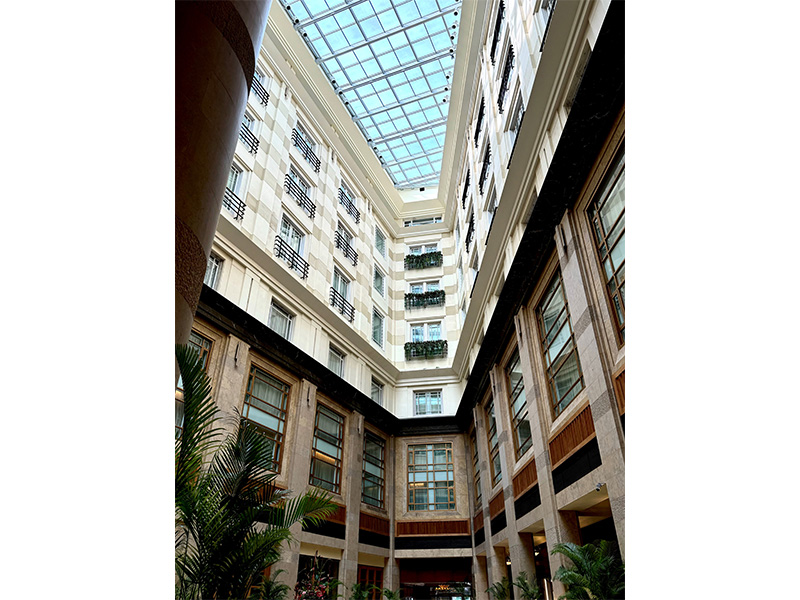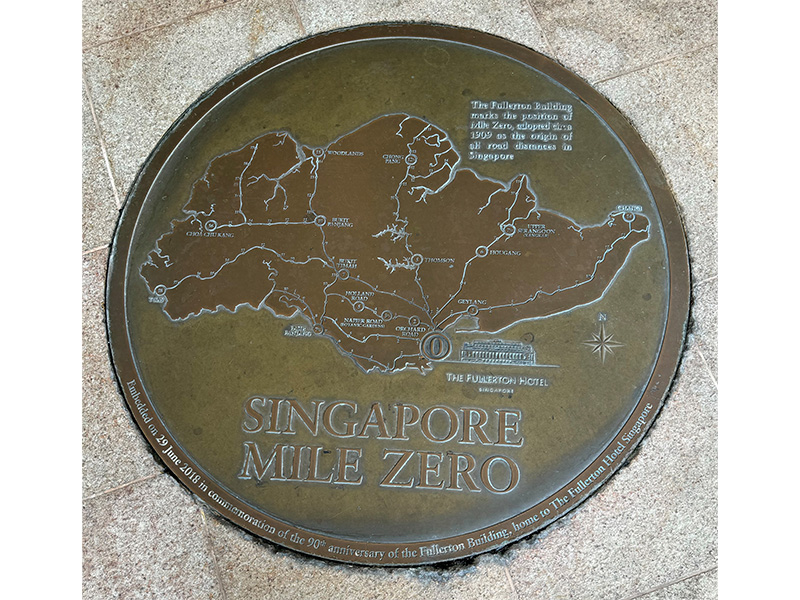Our resident urban explorer CERI POWELL takes a look at the iconic Fullerton Hotel building in Singapore, once home to the General Post Office.
Rising above the Singapore River and providing a majestic backdrop for photos of the Merlion from Marina Bay, The Fullerton Hotel is one of the most recognisable monument buildings in the CBD. So, what of its history?
1800s
The name Fullerton was first used in 1820 for a simple fort on a rocky outcrop with commanding views seaward and over the Singapore River. Already by the time, the river was bustling with sampans carrying merchants between warehouses and labourers toiling to unload spices from across the Orient.
By the 1870s, Singapore land value had sky-rocketed. The Fort Fullerton garrison was moved “far way” – to Sentosa Island. The space that remained, Fullerton Square, soon became the bustling commercial heart of Singapore. At two o’clock every day, traders gathered to strike deals and discuss the affairs of the day. Think of it as 1870s social media in action!
It also became the home to a new General Post Office for Singapore; it was built in 1873 but completely replaced in 1885.
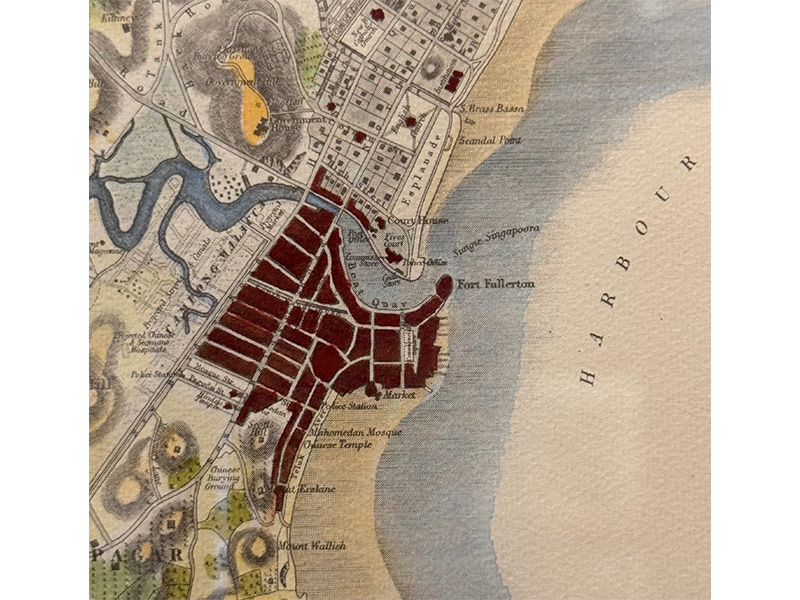
1900s
In 1919, Centenary Day was celebrated to commemorate the 100-year anniversary of Singapore’s founding by Stamford Raffles. Ambitious designs were sought for a lavish building covering the entire peninsula of the old Fort Fullerton. Despite controversy over the rather outrageous “Parthenon at Athens” style, the new Fullerton Building showcased the use of reinforced concrete, an innovative new construction material, and the British love for ostentatious Post Office buildings throughout the Straits Settlements. Construction was completed in 1928.
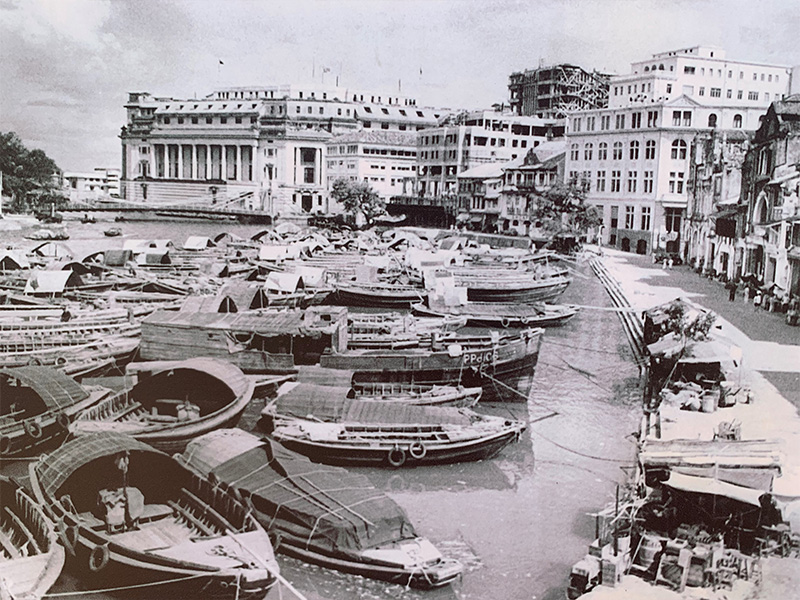
Whether it was collecting mail from the GPO, the issuing of passports, visiting the offices of the Governor of Singapore or even the official Veterinary Surgeon, the Fullerton Building was instantly pivotal to settlement life. And, if it was rather thirsty work, the elite retired upstairs to the Singapore Club. It was known for a “200-foot-long bar with delightful sea breezes”. The specialty drink? Pink Gin.
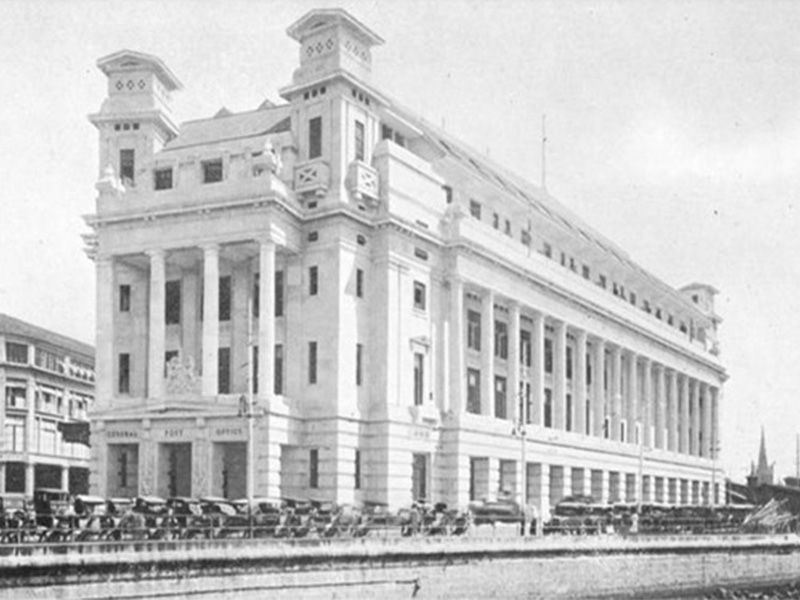
The GPO was extremely high-tech. Mail dropped through the floor to be transported on conveyor belts to the basement sorting rooms, and then by tunnel under the road to the steamships bound for England and China moored at the Post Office Pier. First class delivery to London took between two and five months. From historical accounts it seems that “waiting for the mail” and “busy writing letters to catch the mailboat” were a great excuse for ladies to avoid the endless round of visits demanded by polite society!
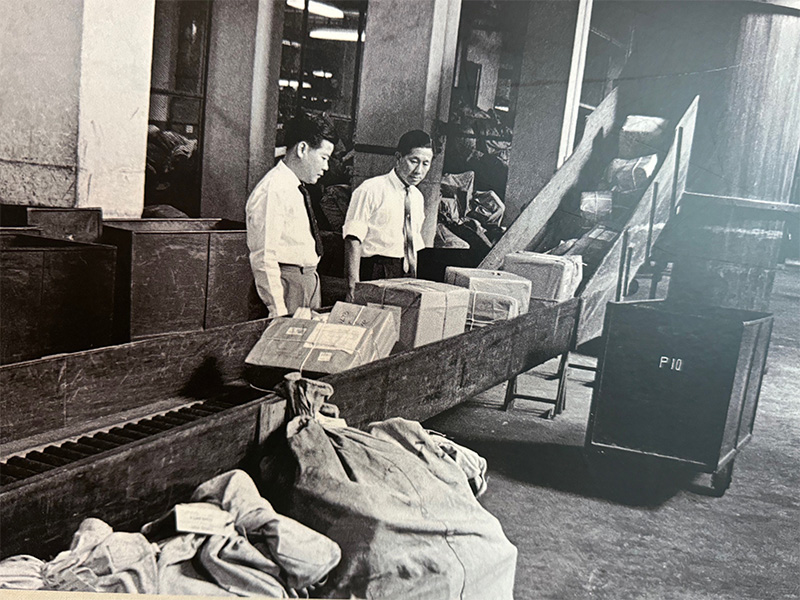
From 1958, the incongruous white box that’s visible on the hotel roof today housed the Fullerton Lighthouse. It’s role was to help guide shipping in the harbour. However, as the financial district’s skyscrapers grew ever higher, the utility of the lighthouse declined. Its decommissioning in 1979 was inevitable.
The building remained firmly in the public eye, however. Fullerton Square was used for political parties to hold rallies during general elections, for example. Lee Kwan Yew, Singapore’s iconic founding prime minister, would enthral Singaporeans with his bold vision at these rallies, with the Fullerton Building as an imposing backdrop.
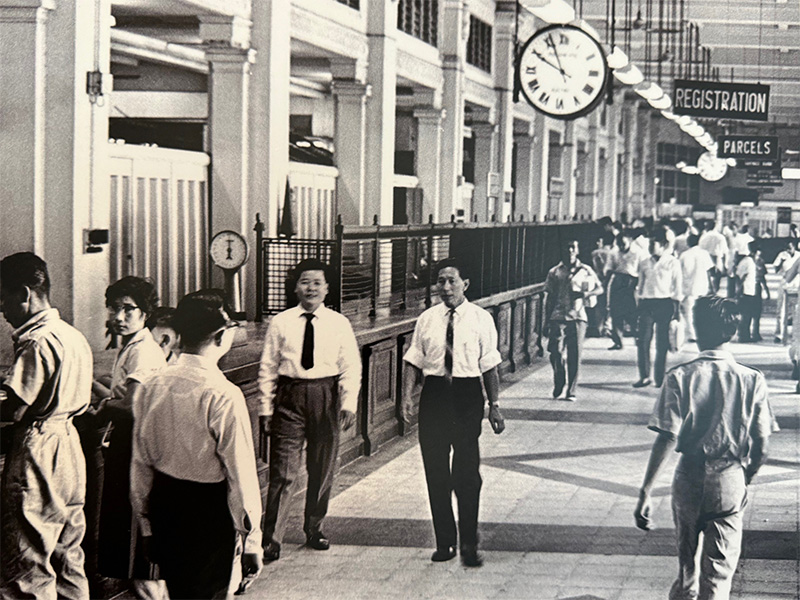
2000s
In 1997, the GPO closed its doors for the last time in this location. The exteriors of this grand old dame of the waterfront were then sensitively restored and the interior completely repurposed as a five-star hotel. January 2001 saw the opening of The Fullerton Hotel Singapore.
Enter the lobby today and you can gaze up at the building’s towering architecture. Discover the history depicted at the Heritage Gallery behind The Courtyard Restaurant. And take a photo with the only red Post Box left in Singapore. (You can even post one of the commemorative cards freely provided!) Or just enjoy a cup of tea and rest those weary feet! There are also heritage tours on offer.
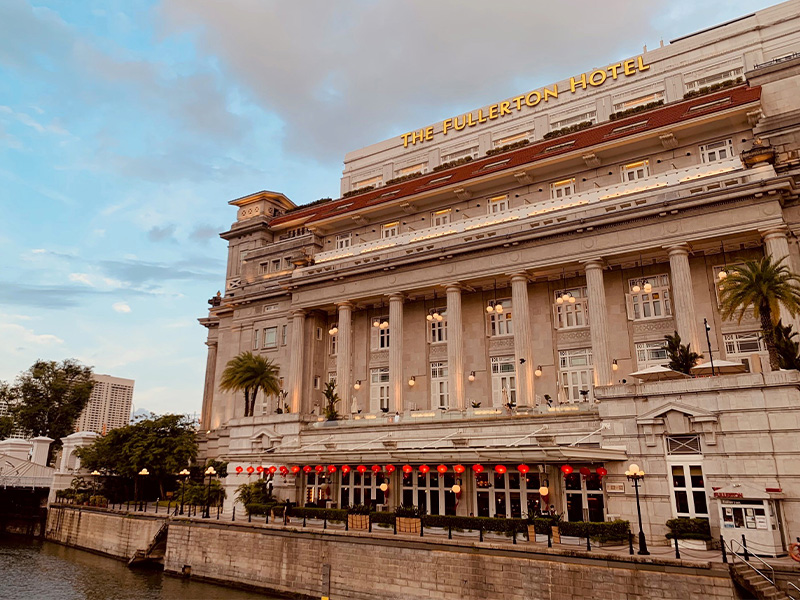
All roads in Singapore once led to the Fullerton Building. While you’re there, check out the “Mile Zero” plaque at the waterfront facing door where all distances in Singapore were, and still are, measured from. Two-metre-high milestones were literally constructed across the island, and even today there is an LRT station called Ten Mile Junction. Changi is at Milestone 14 and Woodlands at Milestone 16.
The Fullerton Building was gazetted as a national monument on 7 December 2015.
5 more facts about the Fullerton Building
- An ancient, inscribed stone monolith once stood near the site of the Fullerton Building. Unfortunately, it was blown up to widen the river passageway in 1843. A fragment of what remains, now known as The Singapore Stone, resides at the National Museum.
- The Fullerton name in Singapore comes from Robert Fullerton (1773-1831). He was born into a family of 12 children in Edinburgh, Scotland, and went on to become the first Governor of the Straits Settlements in the 1820s, with responsibility not only for Singapore but Penang and Malacca too. He actually proposed Malacca as the capital of the Straits Settlements, but it was overlooked for Singapore by Lord William Bentinck. When the Fullerton Building opened in 1928, the Governor, Sir Hugh Clifford, suggested naming it in Fullerton’s honour.
- 1,300 tons of steel, 3,500,000 bricks of various descriptions, 124,000 cubic feet of artificial granite, 20,000 cubic feet of timber and 52,288 barrels of cement were used in the construction of the building in the 1920s.
- In the last days before the British surrender in the war, the building was used as a hospital for British soldiers, with makeshift operating rooms. It was here that Governor Sir Shenton Thomas and Lady Thomas took refuge when Government House (now the Istana) was bombed by the Japanese. The Fullerton Building then became the headquarters of Japan’s military administration in Singapore from 1942 to 1945.
- The historic lighthouse that guided ships into the port was incorporated into a fine-dining restaurant called The Lighthouse. Today, it’s an event space.
The Fullerton Hotel Singapore is at 1 Fullerton Square. It’s a 200m walk from Raffles Place MRT – Exit B. Alternatively, get a bus to Collyer Quay or a car directly to the hotel.
This article first appeared in the October 2024 edition of Expat Living. You can purchase the latest issue or subscribe so you never miss a copy!
To make the most of living in Singapore, read our latest City Guide here for free!
Don't miss out on the latest events, news and
competitions by signing up to our newsletter!
By signing up, you'll receive our weekly newsletter and offers which you can update or unsubscribe to anytime.

